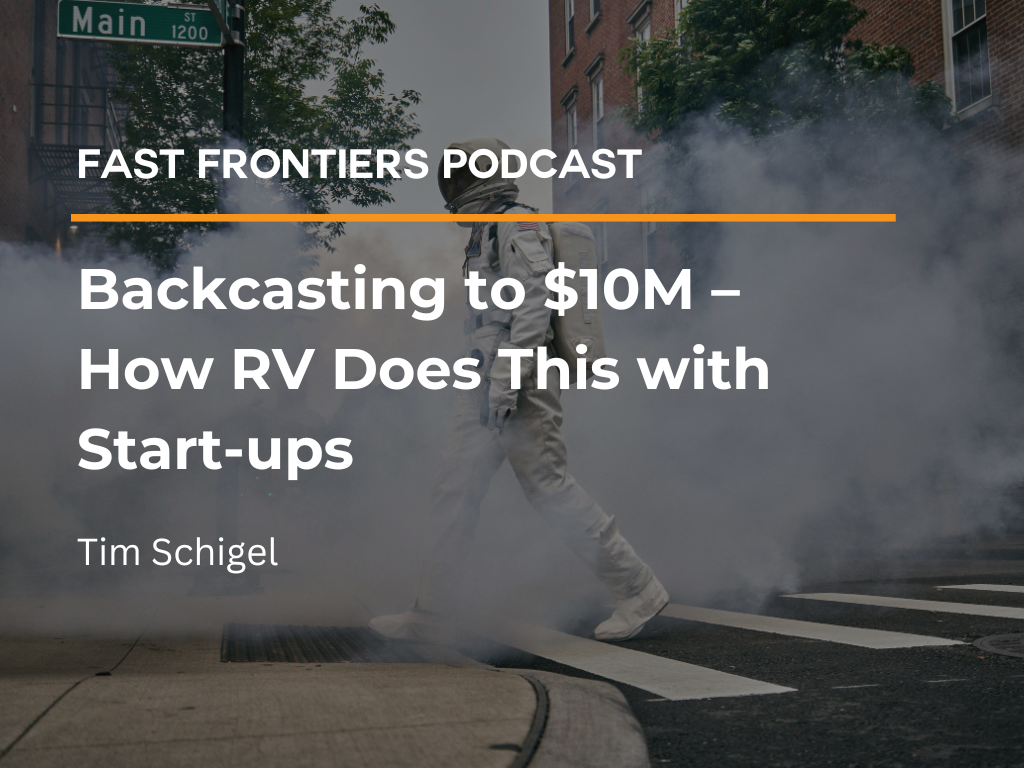Today’s subject is backcasting, particularly, how we at Refinery use this visionary planning method with start-ups to get them where they want to be—as fast as possible. Backcasting is where the ending is really the beginning. Rather than starting at point A and talking about where to go from there, we focus forward, looking at the future “end game” goal, then—in essence—working backward and identifying the specific action steps that will get us there. And in this case, the “working backward” works.
John B. Robinson, who first defined the fundamentals of this method, described the process in a nutshell, asking: “If we want to attain a certain goal, what actions must be taken to get there?” In our case, it is a common exercise we go through with our startups, and it helps reveal priorities and limiting assumptions.. How do we go about doing this? Let’s unpack our process.
What has to be true?
When it comes to successful backcasting, you have to know your end game. And be specific. What are your exact objectives? What are the key results you are gunning for? Again, be specific. Unless you have a clear and precise vision for exactly where you want to end up—a vision of utter success—your chances of getting there are slim to none.
Once you have that clear, successful scenario in your field of sight, put blinders on, focusing solely on that future manifestation. And then ask yourself: What do I need to do today to end up there? Although this may sound simple and eerily like common sense, so many start-ups I see today are still not doing this, but instead are more reactionary in their steps to success. Again, we are concerned with being visionary—and future (forward) focused.
Stages of Growth
When you’re ready to get started, most everyone knows about the initial seed round, which is most often followed by a Series A round. However, in between those two, there is what many call a “post-seed” or “seed plus.” Regardless of the name of the series of stock, I am proposing calling this stage “early scale” instead from now on—to really separate it as its own distinct entity.
This is the pivotal and crucial period where a start-up needs to go beyond the usual incremental growth (like being “satisfied” with 20% month over month growth or doubled revenue). It needs to be radical, with that sole focus of the end game in your sight solely (remember: you have blinders on). In our case, the point is, how do we get to $10 million in annual revenue as fast as possible? We talk about goal setting using OKRs, market segmentation, CAC (customer acquisition cost), etc.
Remove Limiters of Growth
Now is also the time when you focus on removing any limiters to growth. Ask yourself what reservations consumers may have about buying your product? What is keeping your product from being in the possession of every consumer in America? Ask yourself what you need to do to address these frictions. Get creative and think out of the box.
Reprioritize Planning
The next step—keeping your now clear and concise end game in mind—is to reprioritize your planning to reflect this. This reprioritization may—and most likely should—include how you go about hiring. I encourage that the best time to do your hiring is just after you’ve raised money—not waiting to hire until you’re about to run out of money. For example, if you just raised $5 million, don’t wait 12 months to do some hiring. Hire the people you need who can help build your pipeline now because building your pipeline a year from now is too late.
Simply put: You have to stay ahead of the curve. In my experience, I often see many people who don’t do this because they are hesitant to spend. But the key is to go ahead and do the hiring, then reassess and adjust very quickly based on how that goes. If there’s somebody who’s not working out, you have to let them go right away. Also keep in mind that hiring is one of the hardest things we do. A success rate of 70% would be world class. It’s important to know that it is an inefficient process.
Along that same vein of adapting quickly, if some marketing angle that you’re trying just isn’t working after a week, you’ve got to change it up right away. There’s no waiting around or hesitating. You have to respond very fast against the assumptions that you made in the backcasting and planning. That is why I like using OKRs. When done well, they are aspirational, which cause the company to stretch and also to be metric-driven. This takes time and practice. It introduces tension, which is a good thing!
So take a deep breath, set your clear vision, and implement the steps boldly and quickly, without looking back. You’ll get there, albeit in a “backwards” kinda way.



